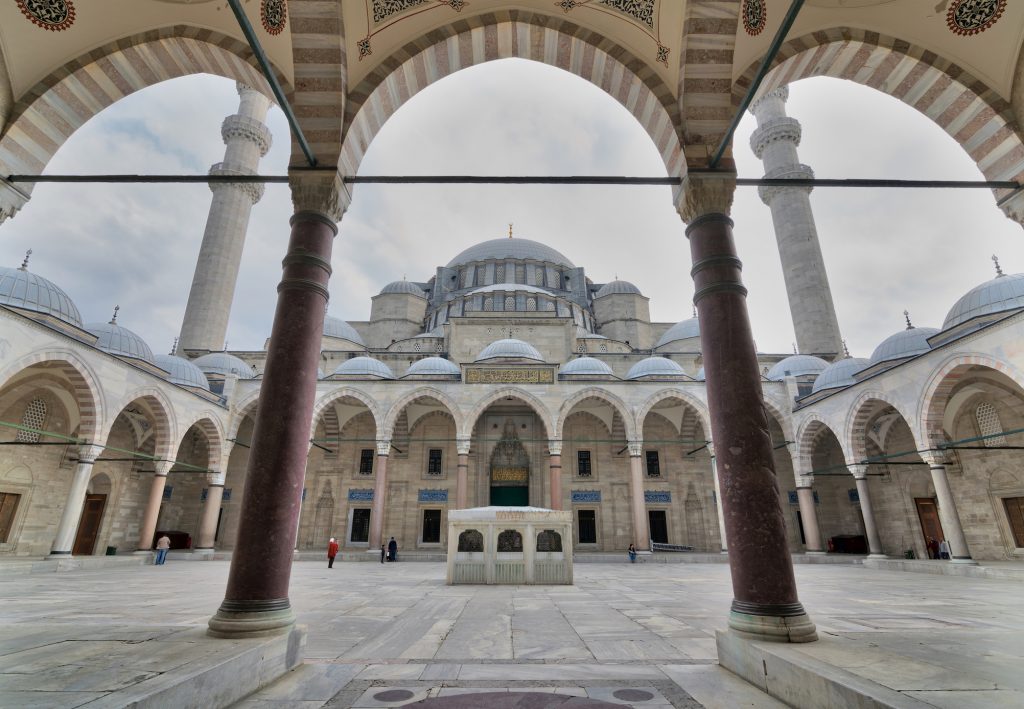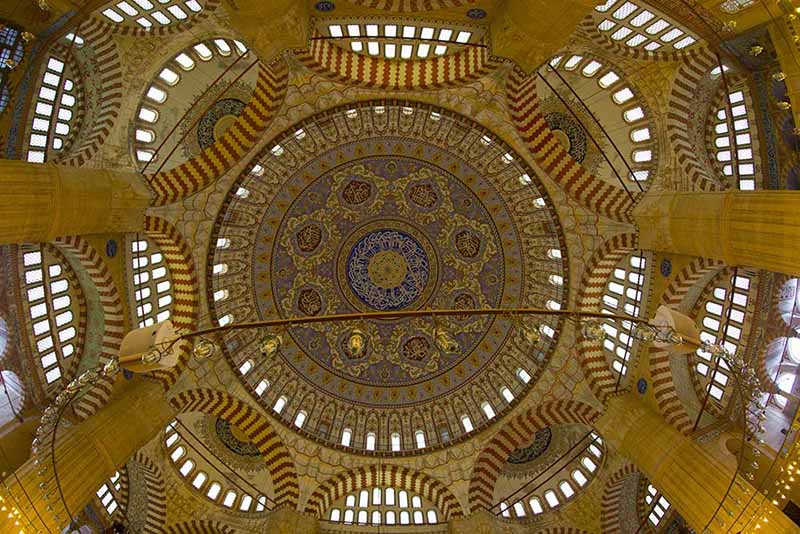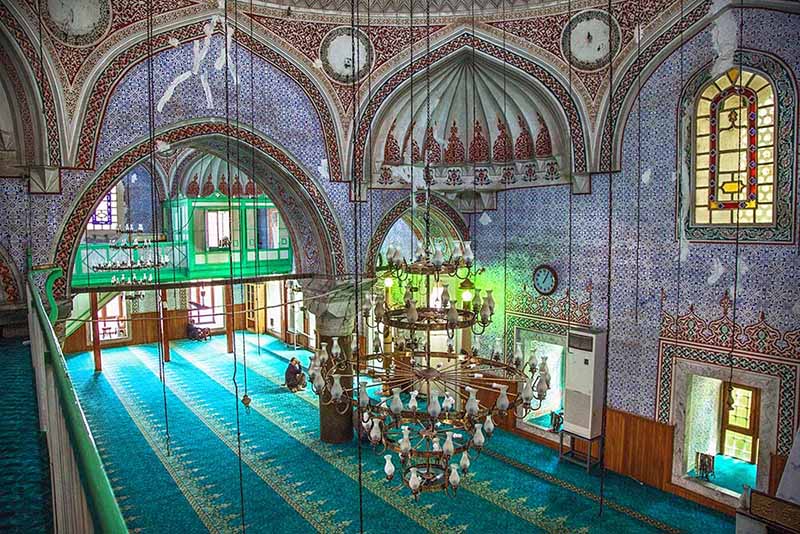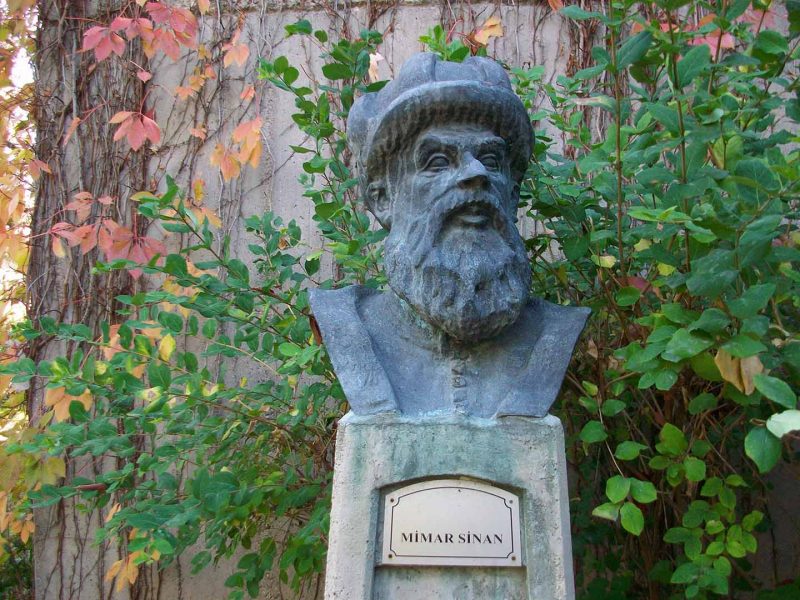Sinan (1488-1588) is one of the greatest building artists in the world and lived during the most powerful period of the Ottoman Empire. His many works have lasted through today. He was very famous throughout all of the Ottoman Empire, officially serving as chief architect at the time a role that meant he was technically the architect of the state. The constructions made on behalf of the state were managed in the “Hassa Architects” department in Topkapı Palace.
Sinan, known as Koca Sinan, was chief architect for nearly 50 years, during which time he designed 334 works: 47 small mosques, 7 darülkura, 77 mosques, 32 madrasah, 23 shrines, 3 hospitals, 17 imarets, 8 bridges, 33 palaces, 23 caravanserai, 36 baths, 6 arches, 8 cellars, and 3 pavilions. Information about Sinan’s work and life comes down to us from 4 written works of the time. Although these works seem to have been written by Sinan himself, some believe they were written by his friend, painter and poet Sai Çelebi. The works include: Risalet-ül Mimariye, Anonymous Risale, Tezkiret-ül Ebniye, and Tuhfet-ül Mimarin.

Courtyard of Suleymaniye Mosque, Istanbul.
Sinan was inspired by the classical period of Ottoman period architecture, and he combined functionality and beauty in all of his works. He integrated his inner artisan zest with architecture and engineering techniques. When studying the structures, it is notable how wide they are, likely because Sinan used hexagonal, square, and octagonal plans in his designs to make the constructions look bulky and broad. The headers in the columns were adorned with mukarnas; panels and cells were included to impose a thin appearance on the dome. Most buildings designed by Koca Sinan are still standing 400 years later. If they are still in use today, that demonstrates that Sinan attaches importance not only to appearance but also to integrity; this also speaks to his engineering intelligence, which he applied to waterway and bridge construction, ridges both important alternative structures for Sinan. Büyükçekmece Bridge is one example, still standing, with a total length of 635.5 meters.

The Selimiye Mosque was built in 1575 by Sinan.
The architectural style of a society is derived from the general mood of the society. This means that modern processes and techniques should be used, but architects also should not move completely away from the tradition. Tools, methods, and design for construction also intertwine with climatic conditions. Sinan was well aware of this holistic approach to building and he prioritized this kind of utility and practicality in his designs. He succeeded in producing durable and aesthetically pleasing works, working hard toward harmonious and self-sustaining structures. The founder of the classical period is Sinan; this means he holds an important place in history.
Sinan built the Şehzade Mehmet Complex between 1543-1548. This building is one of the rarest examples of Ottoman tile workmanship. Rüstem Pasha Complex, Mihrimah Sultan Complex, Barbaros Hayrettin Pasha Complex, Sokullu Mehmet Pasha Complex, Büyükçekmece Bridge, Selimiye Complex, Suleymaniye Complex, Haseki Hürrem Sultan Hamami, and Valide Sultan Complex are some other works of his.

Interior of Haseki Hurrem Sultan Mosque.
Sinan designed the Selimiye Mosque when he was 90 years old. This is an important place both in Ottoman and Turkish work, and it is regarded as one masterpiece in the history of architecture. Sinan’s first and only work in the Aegean Region is the Muradiye Mosque in Manisa. It offers examples of stone and plaster workmanship, wooden and metal ornaments, and tile. The interior design was definitively measured. The tiles used for this building have lasted the second half of the 16th century. One of his most important works is the Süleymaniye Mosque which built in the name of Sultan Süleyman the Magnificent between the years 1551-1558. The mosque was built as part of the Süleymaniye Complex; in the complex are hospitals, madrasa, an imaret, a library, and shops.
Sinan often preferred pen ornamentation. You can find pen ornaments rendered on the edges of the window on the buildings, in the pulpit, in the dome, and in the pendant. In situations where the walls of the mosques were covered with these ornaments, it was inevitable that they would, over time, erode and disintegrate; therefore, they were replaced by baroque-style embroidery ornaments. It is fortunate that in designing modern and dazzling ornaments there was also foresight about how to craft them to be durable across many years. Undoubtedly, the works of Sinan will continue to reflect the history of our lands for many years.

